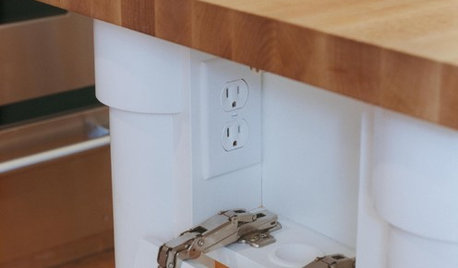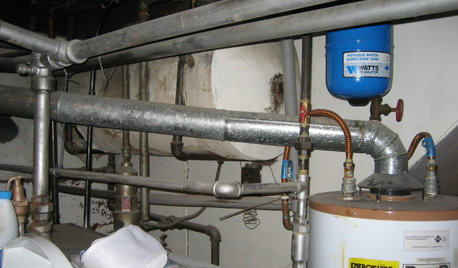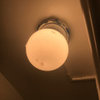wiring non-gfci in gfci outlet box (i know, flame suit on!)
adam12hicks
9 years ago
Related Stories

MATERIALSInsulation Basics: What to Know About Spray Foam
Learn what exactly spray foam is, the pros and cons of using it and why you shouldn’t mess around with installation
Full Story
GREAT HOME PROJECTSPower to the People: Outlets Right Where You Want Them
No more crawling and craning. With outlets in furniture, drawers and cabinets, access to power has never been easier
Full Story
LIGHTINGWhat to Know About Switching to LED Lightbulbs
If you’ve been thinking about changing over to LEDs but aren't sure how to do it and which to buy, this story is for you
Full Story
GREEN BUILDINGZero Net Energy: A Hardworking-House Term to Know
Homes that consume only as much energy as they produce by renewable means are a goal for builders. Learn what ZNE means for you
Full Story
HOUZZ TOURSHouzz Tour: Whole-House Remodeling Suits a Historic Colonial
Extensive renovations, including additions, update a 1918 Georgia home for modern life while respecting its history
Full Story
KITCHEN DESIGNHow to Hide Those Plugs and Switches
5 ways to camouflage your outlets — or just make them disappear
Full Story
REMODELING GUIDESBanish Gizmo Blemishes on Your Walls
Unsightly switches, vents and outlets can ruin your interior design's clear complexion. Keep the look pure with an architect's tips
Full Story
BATHROOM DESIGNShould You Get a Recessed or Wall-Mounted Medicine Cabinet?
Here’s what you need to know to pick the right bathroom medicine cabinet and get it installed
Full Story
MOST POPULARFirst Things First: How to Prioritize Home Projects
What to do when you’re contemplating home improvements after a move and you don't know where to begin
Full Story
REMODELING GUIDES7 Bad Things Your Home May Be Hiding
What you don't know about your home could cost you during a remodel. Here's what to plan for
Full Story








Ron Natalie
kudzu9
Related Professionals
Grafton Electricians · Four Corners General Contractors · Annandale General Contractors · Fairview General Contractors · Hayward General Contractors · Uniondale General Contractors · Valley Stream General Contractors · Wyomissing General Contractors · Channahon Handyman · Emeryville Solar Energy Systems · Hayward Solar Energy Systems · Half Moon Bay Home Automation & Home Media · Lakewood Home Automation & Home Media · Natick Home Automation & Home Media · San Marino Home Automation & Home Mediaadam12hicksOriginal Author
adam12hicksOriginal Author
kudzu9
Bruce in Northern Virginia
greg_2010
adam12hicksOriginal Author
greg_2010
adam12hicksOriginal Author
greg_2010